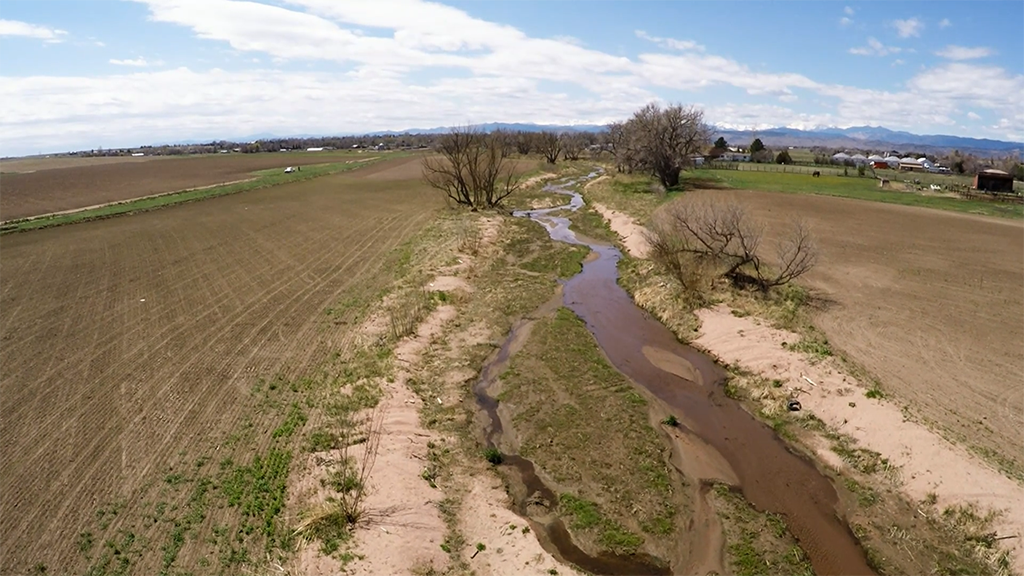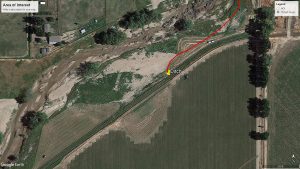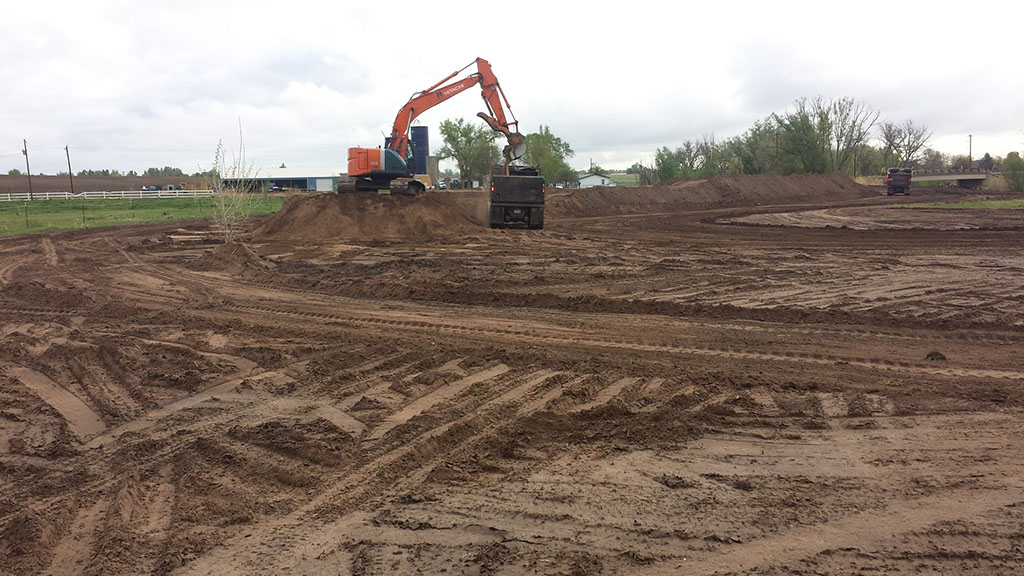
The essential nutrients needed for lucrative agricultural production, nitrogen and phosphorus, have been linked to adverse water quality in streams and rivers.
Edge of field water quality monitoring of best management practices (BMP’s), like vegetated filter strips, helps the agricultural industry quantify potential water quality benefits and impacts of BMP’s.
- Average flow of the Little Thompson is 3-4 cfs.
- Flow during the 2013 flood 17,568cfs.
At the Lempka farm the land adjacent to the Little Thompson River was highly degraded by the 2013 flood. Truckloads of sediment were removed from the land. The field remained under sediment until 2018 as the recovery process took time to be brought to completion. Prior and post flood Larry noted that Little Thompson River segment adjacent to his land listed under 303(d) as impaired for selenium and E. coli. Noting this long term water quality issue Mr. Lempka wanted to make a change. Seeing untreated tail-water enter into the River he got the idea to develop the land that had been recovered from the flood into a filter trip. Mr. Lempka then planted the field with oats and perennial grass mixes. CSU was contacted to assist with the monitoring of the field installing instrumentation in the summer of 2018.

Aerial of Lempka farms post the 2013 flood. Evidence of deposited sediments are prevalent throughout the future filter strip location.



